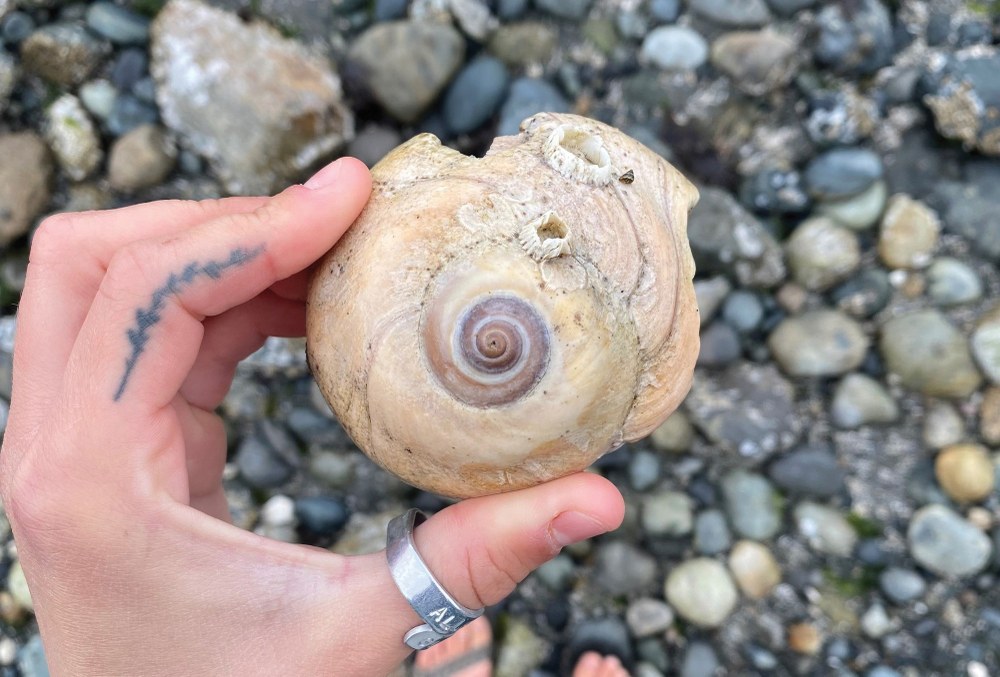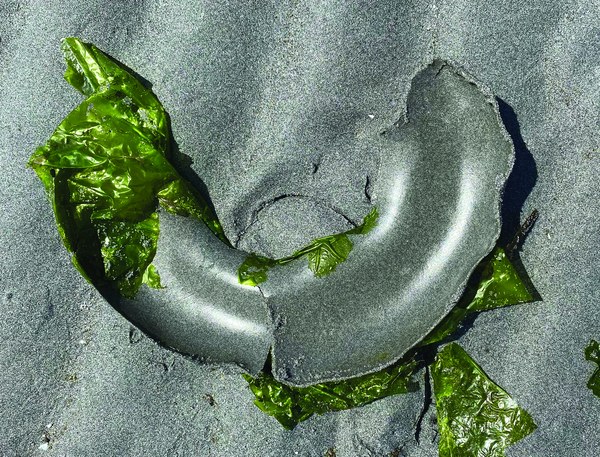
Scientists have only explored five percent of the ocean, estimating that 91 percent of marine species are still unidentified. Naturally, we wonder about the unknown creatures lurking in the deep. But don’t let curiosity kill the… snail. Right in our own backyard are the waters of the Pacific Northwest, homing a diverse ecosystem of marine species. Among them lives a glorious, potentially terrifying, viscous, and only slightly cannibalistic species: the moon snail.
What are moon snails?
Moon snails, part of the Naticidae family, earned their name from the shape of their shell opening – a half-moon. Their shells are spherical, ranging from the size of a blueberry to a baseball. While shell colors vary by species, they typically include an assortment of purples, creams, blues, greys, tans, and pinks – making each shell artistic and unique.
Mainly preying on other mollusks like clams and mussels, moon snails are predatory marine gastropods (a class of snails and slugs) with cannibalistic tendencies, occasionally exercising the right to consume their own kind (hungry times call for cutthroat measures). Despite this troubling truth, moon snails are still subjectively adorable.
 A partial moon snail collar found at Carkeek Beach.
A partial moon snail collar found at Carkeek Beach.
A moon snail’s lunch
When it’s feeding time, a muscular but gooey foot extends from the shell. The foot has critical functions, including navigating the ocean floor, digging into the sand, and engulfing prey. To eat, the foot grasps its food – typically a fellow mollusk – as its radula (a toothed tongue) drills into the prey’s shell. The drilling is a tedious and time-consuming process, taking four days on average. Once the hole is complete, the moon snail will release hydrochloric acid and other enzymes to liquify the meat inside. Then, the moon snail enjoys its delicious and refreshing mollusk smoothie.
New moons
In winter months, moon snails move into deep water, burying themselves under the sea floor to avoid crashing waves. In spring and summer, they return to the intertidal zone for breeding season, laying hundreds of thousands of eggs.
Before laying her eggs, a female moon snail sinks to the ocean floor to create the beginnings of her sand collar. Using her large foot, she grabs grains of sand to cover her entire shell and secretes mucous, cementing the sand in one connected layer. Following this, she lays thousands of eggs, using the cilia on her foot to distribute the eggs between herself and the sand layer. To complete the collar, she creates another layer of sand and mucous, sealing the eggs and detaching the collar from her shell. Mother moon snail moves on to continue hunting, knowing her eggs are protected within the collar. After only a couple of weeks, the eggs hatch, the sand collar disintegrates, and another generation of cute but killer moon snails is born.
Legend has it that moon snail shells are often found after a full moon. Scientists agree, explaining that higher tides from a full moon will carry seashells to shore. On your next walk along the Salish Sea, keep your eyes peeled for these colorful shells. Whether it’s your first or hundredth sighting, it’s safe to say you’ll be over the moon.
This article originally appeared in our summer 2024 issue of Mountaineer magazine. To view the original article in magazine form and read more stories from our publication, visit our magazine archive.
 Bayley Stejer
Bayley Stejer